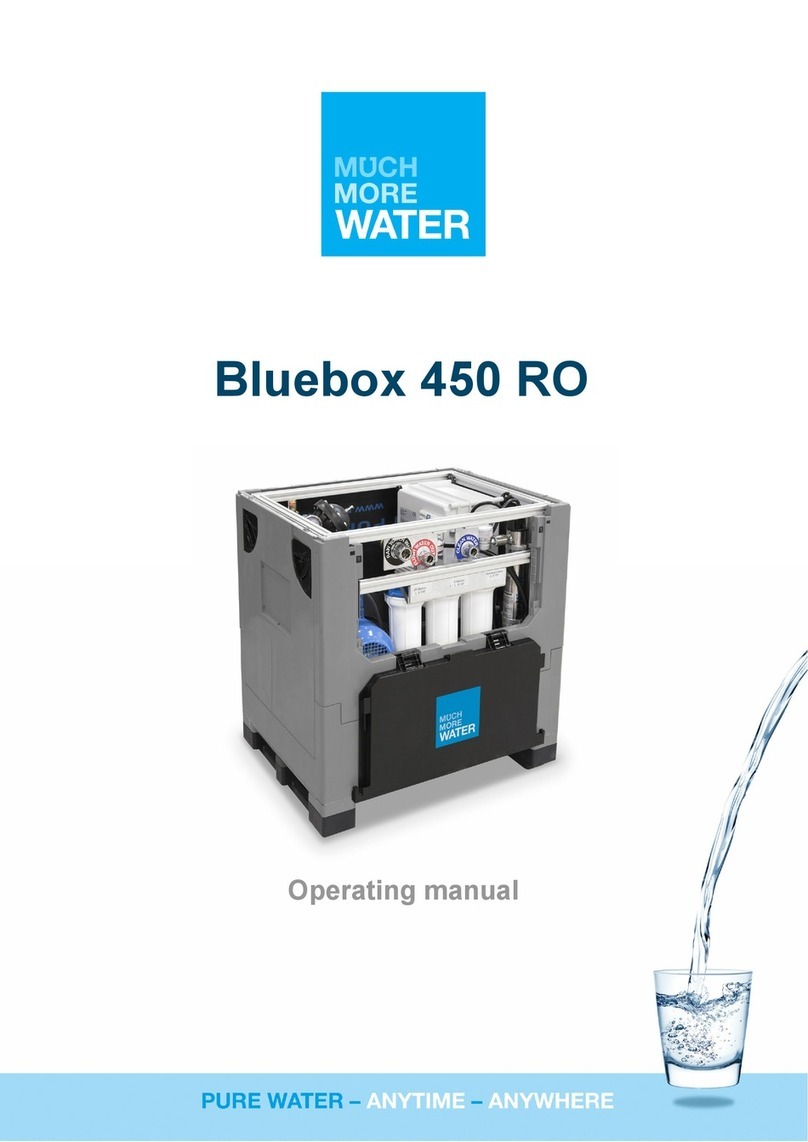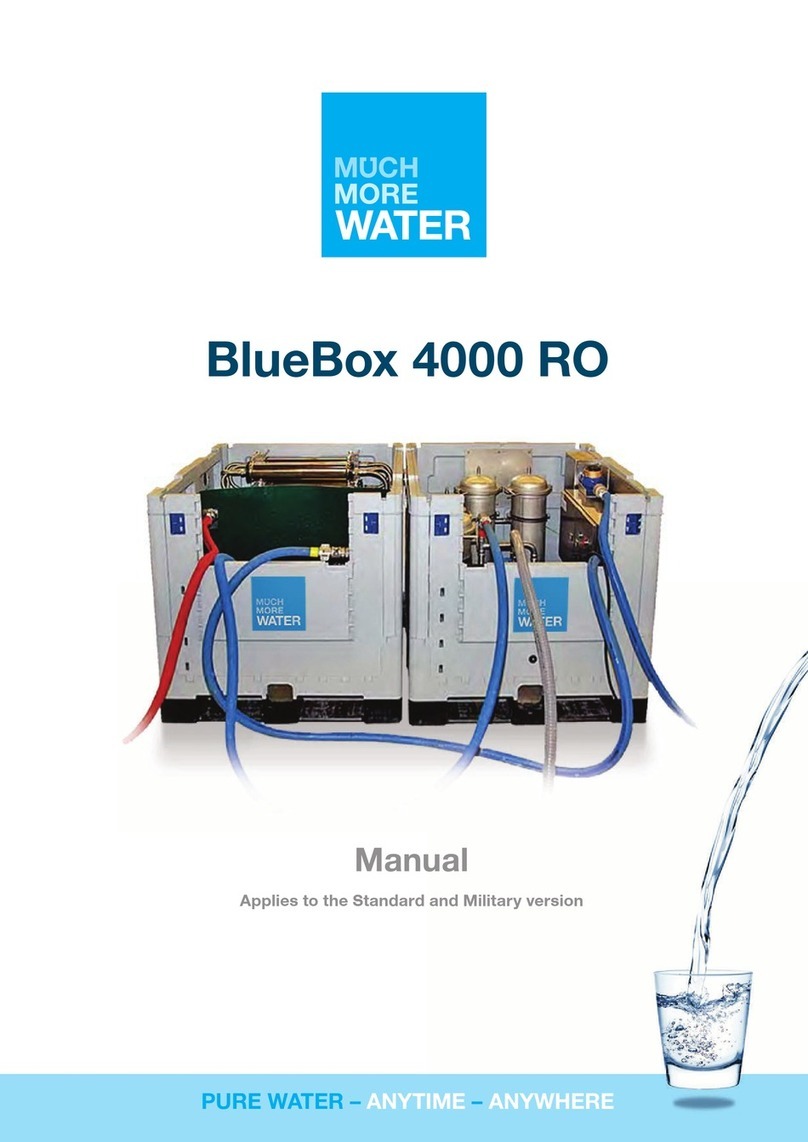
10
PART 6 UV-LAMP
UV Exposure Never illuminate UV Lamp outside of the UV Chamber.
Never look directly at illuminated UV Lamp, even when using protective gear.
Always use protective gear, including gloves and UV safety glasses.
If accidental exposure occurs, immediately cool affected area and consult physician.
Electrical Shock Disconnect power to system before performing any maintenance or repair.
There may be more than one source of power.
Impalement Never perform any physical inspection, repair or maintenance on UV Chamber unless UV chamber has
been isolated and depressurized.
Never service UV Lamps, Sleeves or associated hardware until depressurization of UV chamber has been
confirmed.
Hot chamber Allow UV Lamps, UV Chamber to cool for a minimum of 10 minutes before handling.
Cut or ingestion Ensure the quartz sleeve or lamp is not broken, cracked or damaged in any way when handling equipment.
Scald from water When there is no water flow, the water in the chamber will become hot.
To prevent scalding, allow the system to cool before draining the system.
Fire Do not store any combustible or flammable material close to the system.
Hg Exposure The UV lamp contains mercury. If the lamp breaks, then avoid inhalation or ingestion of the debris and
avoid exposure to eyes and skin. Never use a vacuum cleaner to clean up a broken lamp as this may
scatter the spilled mercury. Obey local regulations and guidelines for the removal and disposal of mercury
waste.
Water leak Use proper plumbing materials to avoid potential material degradation from UV exposure.
No power GFCI and/or breaker tripped.
Transient voltage surge suppressor (TVSS) damaged
Power supply damaged
Reset GFCI and/or breaker
Replace TVSS
Replace power supply and use a TVSS
GFCI or breaker
repeatedly trips
Connection between lamp and lamp plug is wet
Short-circuit in the electrical assembly
Clean and dry lamp pins and lamp plug, check unit
for leaks or condensation
Replace power supply
Leak at inlet or outlet Threaded pipe fittings are leaking Clean threads, reseal with Teflon tape and retighten
Leak detected from
area of UV chamber
Condensation of moist air on cold chamber
(slow accumulation)
O-ring damaged, deteriorated or incorrectly installed
Lamp/sleeve assembly not properly installed
(too tight or not tight enough)
Control humidity or relocate unit
Inspect and replace if deteriorated
Tighten assembly hand-tight
Leak detected
at sensor (if so
equipped)
UV sensor o-rings are damaged, deteriorated, or
incorrectly installed
Inspect and replace o-rings if deteriorated
Alarm See Display section See Display section
System is operating
but water tests
reveal bacterial
contamination
Equipment downstream of UV system is acting as
a breeding ground for pathogens
Pathogens are residing in the distribution lines
post-UV
Recontamination from pipe dead-ends
Ensure UV is the last piece of treatment equipment
Ensure all distribution lines have been disinfected
with chlorine
Remove any pipe dead-ends and flush with chlorine
Lamp timer does not
read anything
Unit is unplugged
No power at AC power outlet
Power cord is damaged
Power surge caused damage to electrical assembly
Plug unit into AC power outlet
Replace fuse or reset breaker
Replace power cord
Replace power supply and use a surge protector
Potential Hazard Safety Measures
Symptom Possible cause Possible solution































